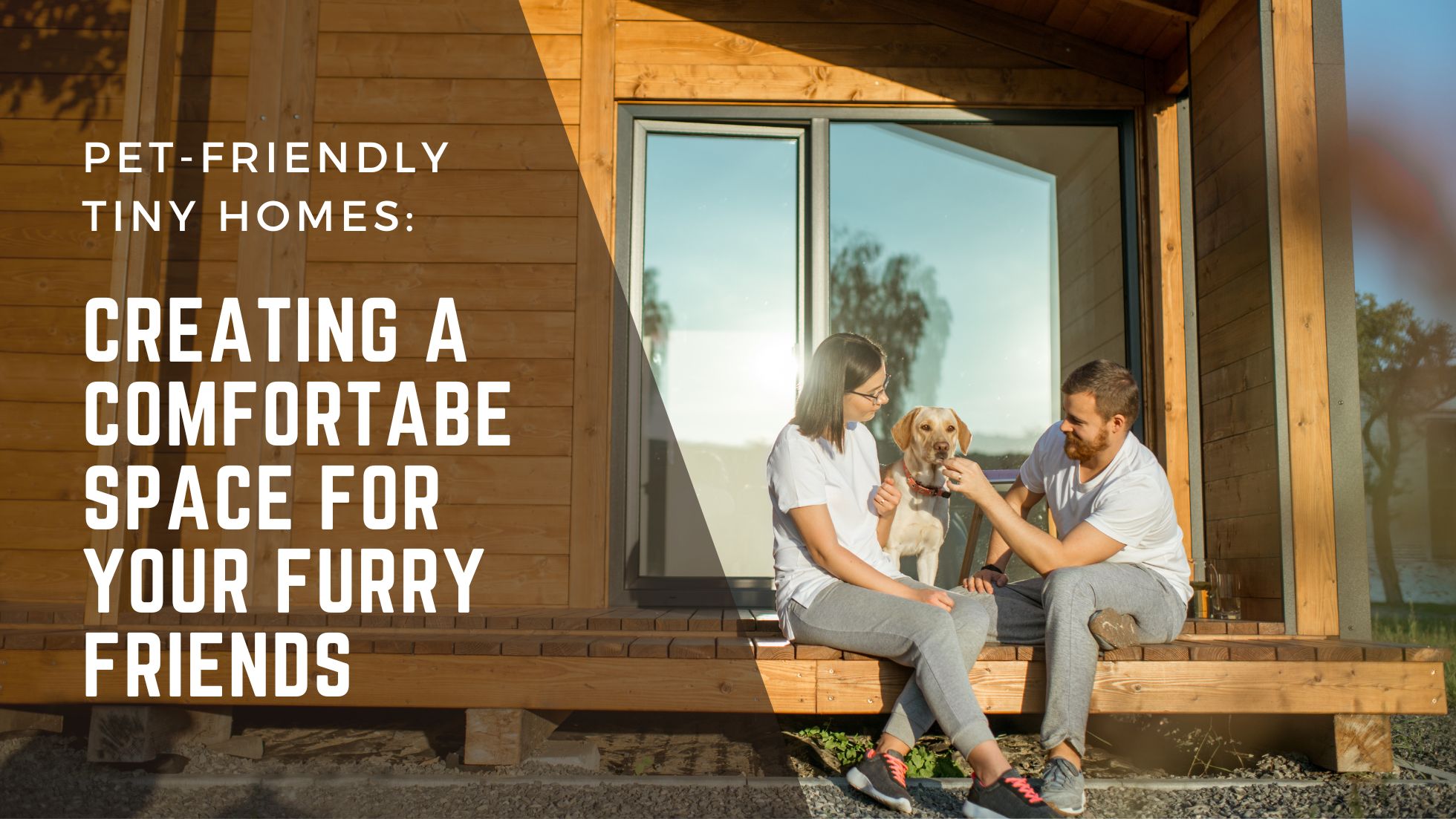
Living in a tiny home doesn’t mean you have to compromise on comfort, especially when it comes to accommodating your beloved pets. With some thoughtful planning and creative solutions, you can ensure that your tiny home is both functional and comfortable for you and your furry friends. This blog will explore various tips and ideas to make your tiny home pet-friendly, from optimizing space to incorporating pet-friendly features.
Designing a Pet-Friendly Layout
Consider Your Pet’s Needs
The first step in creating a pet-friendly tiny home is to consider your pet’s specific needs. Dogs, cats, and other small animals have different requirements, so it’s essential to tailor your space to accommodate them comfortably. Think about areas for sleeping, eating, playing, and bathroom needs.
Maximize Vertical Space
In a tiny home, every inch counts. Maximizing vertical space can help create additional areas for your pets. Install shelves, perches, and climbing structures for cats to explore. These vertical spaces provide exercise and entertainment without taking up valuable floor space.
Create Defined Spaces
Establishing defined spaces for your pet’s activities can help keep your tiny home organized. Designate specific areas for feeding, sleeping, and playing. This helps maintain a tidy environment and makes your pet feel secure and comfortable.
Sleeping Areas
Built-in Pet Beds
Consider integrating pet beds into your furniture. Built-in beds under benches, in nooks, or within custom cabinetry can save space and provide a designated sleeping area for your pet.
Convertible Furniture
Use furniture that can serve multiple purposes. For example, an ottoman that doubles as a storage unit can house your pet’s toys and supplies while providing a place for them to perch.
Create Vertical Space for Cats
Cat Shelves and Perches
Install shelves or perches on your walls to give your cat places to climb and rest. These can be strategically placed to create a vertical playground, keeping your cat entertained and active.
Cat Trees
Compact cat trees or wall-mounted climbing systems can provide hours of entertainment and exercise for your feline friends. Choose designs that fit your decor and available space.
Feeding Stations
Tidy Feeding Areas
Designate a specific area for feeding to keep your home clean and organized. Place food and water bowls on a mat to catch spills and make cleaning easier. Consider raised feeders for larger dogs to aid digestion and reduce strain on their necks.
Built-In Feeding Stations
For a more integrated look, create a built-in feeding station. A pull-out drawer in the kitchen can hold food and water bowls, which can be hidden away when not in use. This keeps the space tidy and reduces the risk of tripping over bowls.
Personalizing Your Tiny Home for Pets
Custom Pet Furniture
Consider custom-built furniture designed specifically for your pets. This could include a combined dog bed and storage unit, a window perch for your cat, or a built-in aquarium.
Pet Doors
Install pet doors to give your pets easy access to different areas of your home or an enclosed outdoor space. Ensure the doors are secure and fit your pet’s size.
Comfort Items
Provide comfort items like cozy blankets, pet-safe heating pads, and your pet’s favorite toys. Familiar items can help your pet feel more at home and reduce anxiety.
Easy-to-Clean Materials
Pets can be messy, so using easy-to-clean materials can save you time and effort.
Flooring
Choose durable, pet-friendly flooring such as vinyl, laminate, or tile. These materials are easy to clean and resistant to scratches and stains.
Furniture
Opt for furniture with removable, washable covers. This makes it easier to clean up pet hair, dirt, and spills. Leather and microfiber are good choices for pet-friendly upholstery.
Play and Exercise
Indoor Play Areas
Ensure your pets have enough space to play and exercise, even in a small home. For cats, install scratching posts, climbing trees, and interactive toys. Dogs can benefit from puzzle toys and small play areas where they can move around freely.
Outdoor Access
If possible, provide your pets with access to the outdoors. A secure patio, balcony, or fenced yard allows pets to get fresh air and exercise. For cats, consider a “catio” – an enclosed outdoor space that lets them explore safely.
Portable Playpens
Portable playpens can be a great solution for small dogs or puppies. They provide a contained area for play and rest and can be easily folded and stored when not in use. This is especially useful for maintaining a tidy living space.
Bathroom Needs
Litter Boxes
For cat owners, finding a discreet place for a litter box is essential. Consider hidden litter boxes that double as furniture, such as a bench or side table. Ensure the litter box is easily accessible and cleaned regularly to maintain a fresh environment.
Dog Bathrooms
For dogs, create a designated bathroom area. Training your dog to use a specific spot outside or a pet-friendly balcony can help keep the rest of your home clean. Consider using artificial grass patches or pee pads if outdoor access is limited.
Safety Considerations
Ensuring your pet’s safety in a tiny home involves a few additional considerations.
Secure Hazardous Items
Keep hazardous items like cleaning supplies, medications, and small objects out of reach. Use childproof latches on cabinets if necessary.
Safe Heating and Cooling
Make sure your home is comfortably heated and cooled for your pets. Avoid using space heaters or fans that your pets could accidentally knock over.
Creating a Routine
Creating a routine for your pets can help them feel more secure and comfortable in a tiny home. Regular feeding times, walks, and play sessions can establish a sense of normalcy and stability.
Feeding Schedule
Maintain a consistent feeding schedule to help your pets feel secure. Use the designated feeding area and keep their food and water bowls clean and accessible.
Exercise and Playtime
Schedule regular exercise and playtime sessions to keep your pets physically active and mentally stimulated. For dogs, this might include walks and outdoor play. For cats, interactive toys and climbing spaces can provide much-needed activity.
Rest and Sleep
Ensure your pets have a comfortable place to rest and sleep. This might be a cozy bed in a quiet corner or a soft blanket on the couch. Regular rest periods are essential for their overall well-being.
Conclusion
Creating a pet-friendly tiny home is entirely possible with some thoughtful planning and creativity. By considering your pet’s needs and incorporating smart design solutions, you can make your small space a comfortable and welcoming haven for both you and your furry friends.
